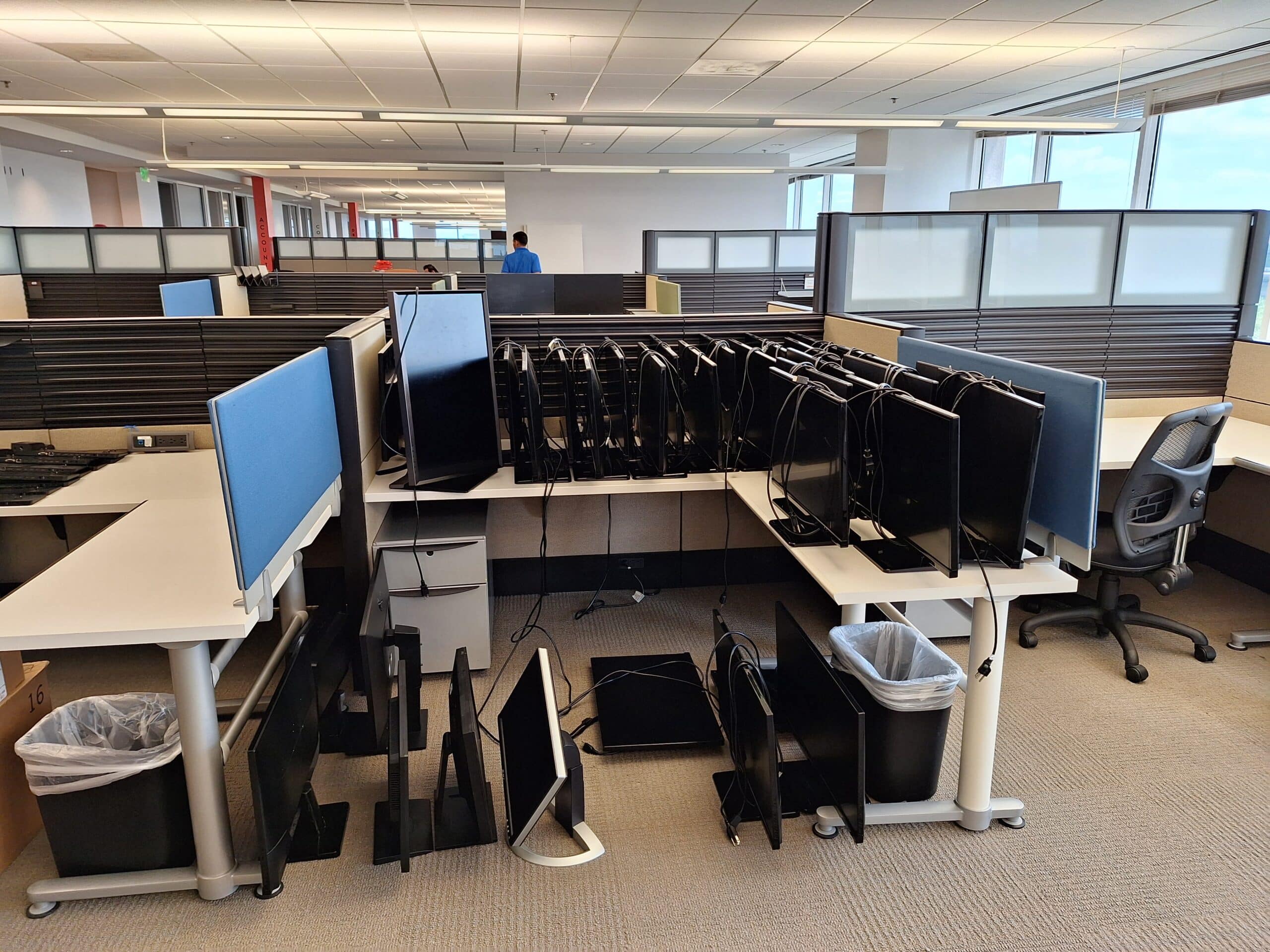When you have old or unwanted electronics, handling their disposal is important to protect the environment properly. There are specific procedures to follow when recycling electronics, which involve safely disposing of the hazardous materials and components found in electronics.
These materials must be recycled in an environmentally friendly manner so that their hazardous components do not contaminate the environment. Depending on the type of electronics, there are various methods for recycling them, such as donating, selling, or returning them to the manufacturer.

What Is Considered Electronic Waste?
Electronic waste, otherwise known as e-waste or waste electrical electronic equipment (WEEE), comprises electronic devices no longer wanted or needed. This may involve anything from smartphones and laptops to desktops, printers and scanners, tablets, and monitors, fridges and freezers, solar panels, LED bulbs, vending machines, games consoles, toasters, kettles, microwaves, treadmills, radios, and music instruments. Once these items have come to the end of their lifecycle, or sometimes before, they are considered e-waste.
Why Is Electronic Waste Hazardous?
Electronic waste (WEEE) is made up of materials that contain hazardous chemicals. When this waste is left in landfills for a long time, the chemicals can leach into soil and water, causing pollution. This pollution can be dangerous for animals, humans, and the environment. Furthermore, when electronic parts are burned or melted, they can create toxic dioxins and dioxin-like compounds (DLC) that can harm our health.
How to Manage Electronic Waste
If you have electronic waste you need to dispose of, here are several options for you to consider:
- Repair It
Have you considered the simplest solution? Try powering off, waiting for a few moments, and then powering back on again. Not only would this save you money, but it could also be good for the planet.
- Recycle It
Suppose you have a vehicle capable of transporting your unwanted electrical items. In that case, you should take them to a nearby recycling center to deposit them at a designated electrical collection point. Your local council may provide a bulky collection service, where they come to your home and take away large items like fridges, freezers, and cookers. These components can then be reused to manufacture new items such as phones and consoles.
- Exchange It
Some stores now offer a product swap option as an environmentally conscious solution. This allows customers to bring in an older item (such as a TV) and exchange it for a newer model. This way, the store can ensure the proper disposal of the old product while helping the customer update their equipment.
- Sell It
If it still works, you can make some extra money by selling your used electrical appliance. You can list your item on popular websites like eBay, Amazon, or Facebook Marketplace. Make sure to follow safety protocols when selling online to ensure you and your item are safe.
- Donate It
You could give it to a charity if you no longer need an electrical appliance in good working order. This appliance may not be of use to you anymore. However, it could be a great help to another person.
Conclusion
Electronic waste recycling is an important process to help reduce the amount of waste going into landfills. Knowing the different types of e-waste and their appropriate disposal methods is important. It is also important to be aware of the risks associated with improper disposal of e-waste, such as hazardous chemicals and toxins. We can reduce our environmental impact with the right knowledge and resources while creating a more sustainable future.
Beyond Surplus offers a convenient, secure, and cost-effective IT equipment disposal and electronics recycling. We provide data destruction, electronics recycling and IT equipment disposal to businesses, schools, medical facilities and residential customers. If you need e-waste disposal, we’ve got you covered! Get in touch with us to schedule a pickup or drop-off!


